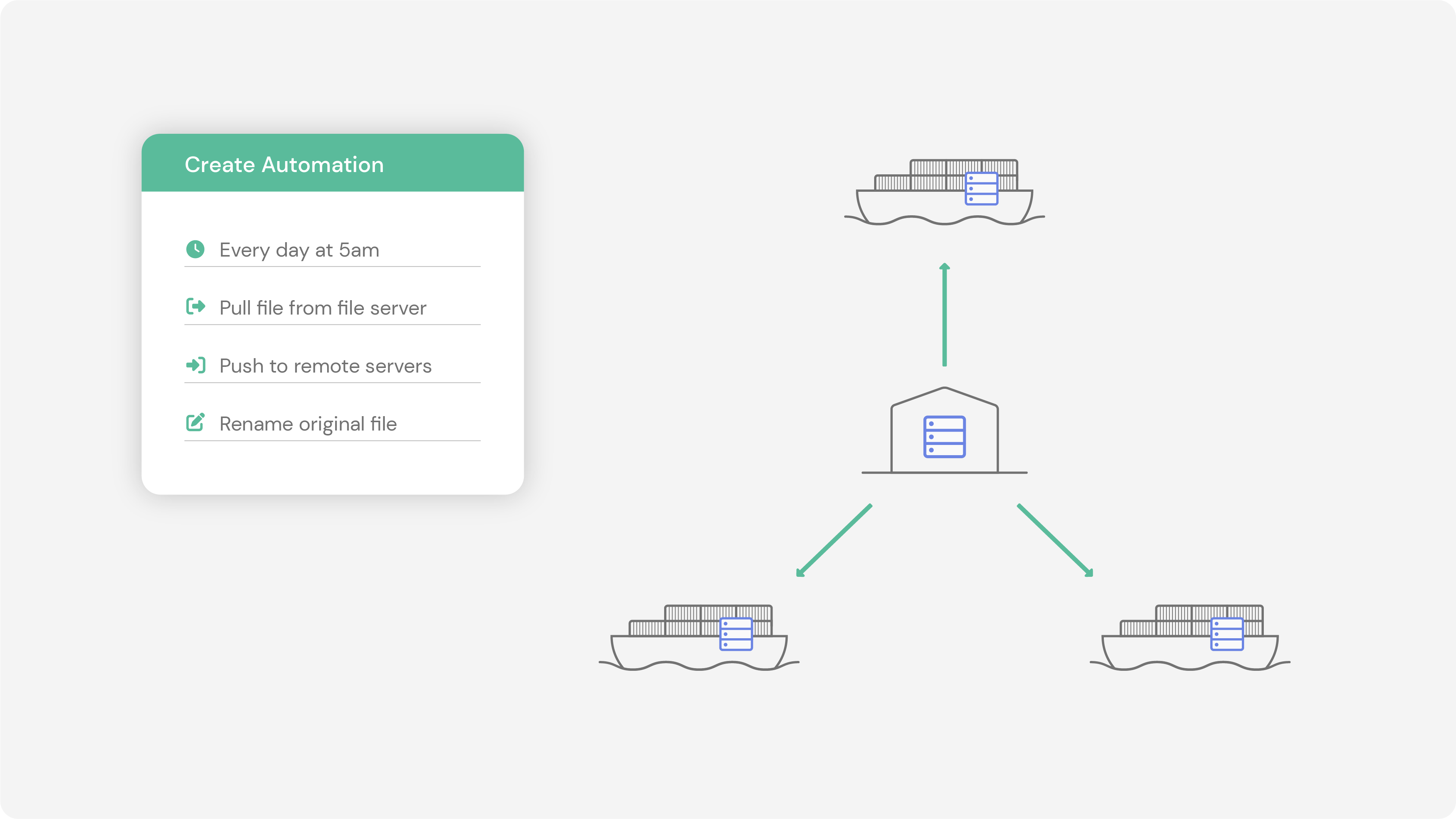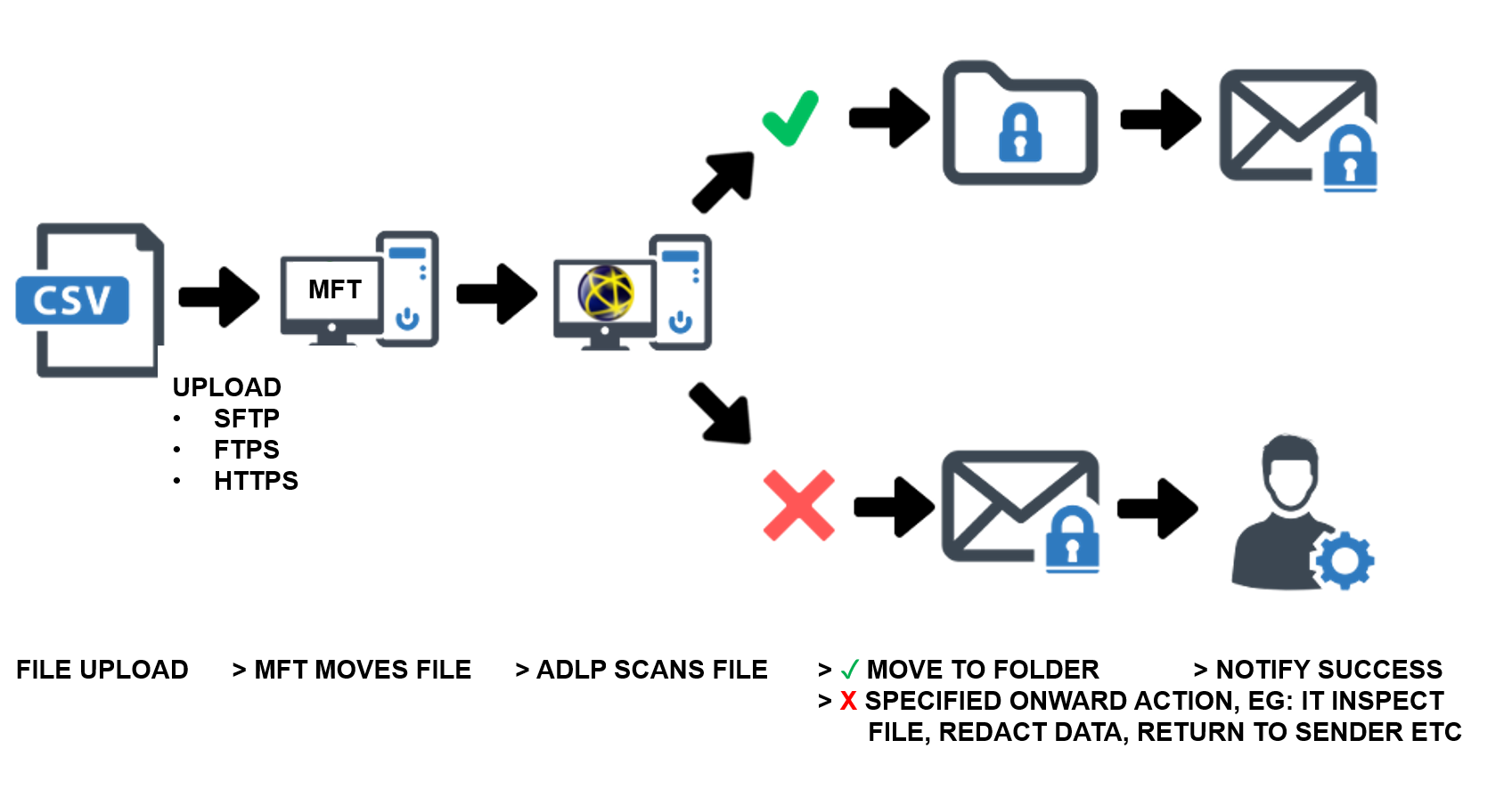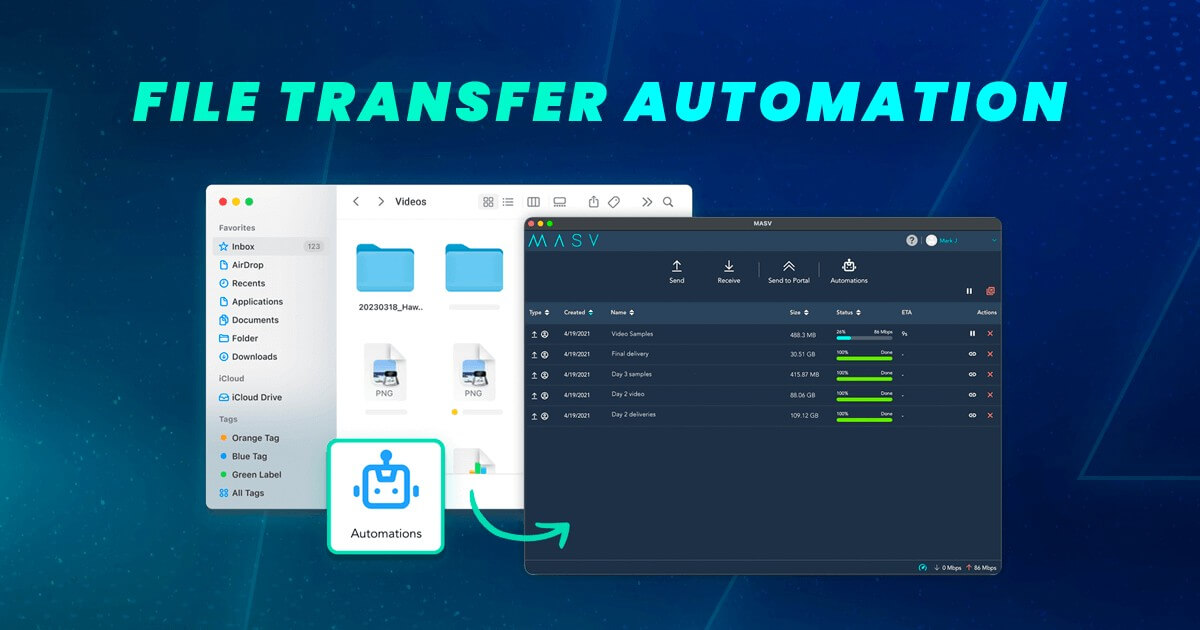Automated file transfer solutions for enterprises: Streamlining Data Management Efficiencies
In the fast-paced world of modern business operations, the need for efficient data management solutions has never been more crucial. Automated file transfer solutions for enterprises offer a streamlined approach to handling data transfers, ensuring smooth operations and increased productivity.
Let's delve into the realm of automated file transfer solutions and explore how they revolutionize data management processes for businesses.
The content of the second paragraph that provides descriptive and clear information about the topic
Overview of Automated File Transfer Solutions

Automated file transfer solutions for enterprises refer to the use of technology to transfer files between systems, applications, or servers without manual intervention. These solutions streamline the process, ensuring efficient, secure, and reliable file transfers.
The importance of automated file transfer in modern business operations cannot be overstated. With the increasing volume of data being generated and exchanged within organizations, manual file transfer processes are no longer feasible. Automated solutions help businesses save time, reduce errors, improve data security, and enhance overall productivity.
Challenges without Automated File Transfer Solutions
- Increased risk of human error: Manual file transfers are prone to errors such as incorrect file destinations, file loss, or data corruption, leading to potential business disruptions.
- Lack of scalability: As data volumes grow, manual file transfers become inefficient and time-consuming, hindering the ability of enterprises to handle large amounts of data effectively.
- Security vulnerabilities: Manual file transfers are often less secure compared to automated solutions, increasing the risk of data breaches, unauthorized access, or data leaks.
- Inefficient workflow: Manual file transfer processes require human intervention at each step, causing delays, bottlenecks, and inconsistencies in data transfer workflows.
Benefits of Automated File Transfer Solutions

Automated file transfer solutions offer a wide range of benefits for enterprises looking to streamline their operations and improve efficiency. By automating file transfers, organizations can save time, reduce errors, enhance security, and increase overall productivity.
Improved Efficiency
Automated file transfer solutions help eliminate manual tasks such as copying and pasting files, reducing the risk of human error and freeing up employees to focus on more strategic activities. This streamlines workflows and ensures that files are transferred quickly and accurately.
Enhanced Security
Automated file transfer solutions often come with built-in encryption and secure protocols, ensuring that sensitive data is protected during transit. By automating file transfers, organizations can reduce the risk of data breaches and ensure compliance with industry regulations.
Cost Savings
By automating file transfers, organizations can reduce the need for manual intervention, which can lead to cost savings in terms of labor and operational expenses. Additionally, automated file transfer solutions can help optimize resources and minimize downtime.
24/7 Availability
Automated file transfer solutions can be set up to run on a schedule or triggered by specific events, allowing for continuous file transfers even outside of normal business hours. This ensures that critical files are always delivered on time, regardless of when they need to be sent.
Comparison with Manual Processes
When comparing automated file transfer solutions with manual processes, the advantages are clear. Automated solutions are faster, more reliable, and less prone to errors than manual transfers. They also offer greater visibility and control over file transfers, providing organizations with peace of mind and assurance that their data is secure.
Key Features to Look for in Automated File Transfer Solutions
When selecting an automated file transfer solution for your enterprise, it is crucial to consider key features that can enhance efficiency, security, and scalability. Here are some essential features to look for:
Security and Compliance
Ensuring the security and compliance of file transfers is paramount for enterprises, especially those dealing with sensitive data. Look for features such as encryption, secure protocols (e.g., SFTP, FTPS), and compliance certifications (e.g., GDPR, HIPAA) to protect your data during transit
Scalability and Integration
Enterprises should prioritize scalability and integration capabilities when choosing a file transfer solution. The ability to scale as your business grows and seamlessly integrate with existing systems (e.g., ERP, CRM) can streamline operations and improve productivity.
Automation and Scheduled Transfers
Automation is a key feature in automated file transfer solutions, allowing you to schedule transfers, set up triggers based on specific events, and eliminate manual intervention. Look for solutions that offer robust automation capabilities to save time and reduce errors.
Monitoring and Reporting
Effective monitoring and reporting tools are essential for tracking file transfer activities, identifying issues, and ensuring compliance. Features like real-time alerts, audit trails, and customizable reports can help you maintain visibility and control over your file transfers.
File Transformation and Protocol Support
Choose a file transfer solution that supports a wide range of file formats and protocols to accommodate various data types and systems. Features like file transformation, protocol conversion, and compatibility with legacy systems can streamline file transfers across your organization.
Implementation and Integration of Automated File Transfer Solutions

Implementing and integrating automated file transfer solutions within an enterprise is crucial for streamlining processes and improving efficiency. Below are the steps involved in implementing an automated file transfer solution, best practices for integration, and common challenges faced during the implementation phase.
Steps in Implementing an Automated File Transfer Solution
- Assess the current file transfer processes and identify areas that can be automated for optimization.
- Choose the right automated file transfer solution that aligns with the organization's needs and requirements.
- Plan the implementation process, including setting goals, timelines, and assigning responsibilities.
- Configure the automated file transfer solution according to the organization's workflows and security protocols.
- Test the solution thoroughly to ensure seamless integration with existing systems and processes.
- Train employees on how to use the automated file transfer solution effectively for maximum efficiency.
- Monitor and evaluate the performance of the automated file transfer solution regularly to make necessary adjustments.
Best Practices for Integrating Automated File Transfer Solutions
- Ensure compatibility with existing systems by choosing a solution that supports various integration options.
- Establish clear communication channels between IT teams and stakeholders to facilitate a smooth integration process.
- Implement security measures to protect sensitive data during the integration of automated file transfer solutions.
- Create documentation and provide training to employees to ensure a successful integration and adoption of the new solution.
Common Challenges During Implementation and How to Overcome Them
- Resistance to change: Address concerns and provide training to help employees adapt to the new automated file transfer solution.
- Data security risks: Implement robust security measures and encryption protocols to protect data during the transfer process.
- Integration issues: Work closely with vendors and IT teams to resolve compatibility issues and ensure a seamless integration.
- Performance issues: Monitor the solution regularly and optimize settings to improve performance and efficiency.
Closing Summary
As we wrap up our exploration of automated file transfer solutions for enterprises, it's evident that embracing automation in data management is key to staying competitive in today's market. By leveraging these solutions, businesses can optimize their workflows, enhance security measures, and propel their operations to new heights of efficiency and effectiveness.
Embrace the future of data management with automated file transfer solutions and witness the transformative power they bring to the table.